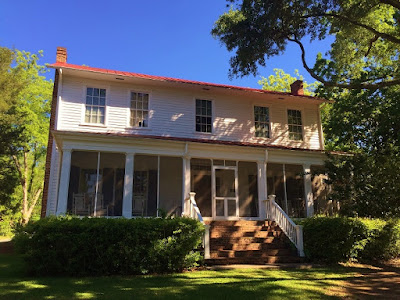Ah! Ich habe deinen Mund geküßt, Jochanaan.
For the Feast of the Beheading of St. John the Baptist, here is some decidedly non-liturgical music which I always revisit on this date: the finale of Richard Strauss' opera Salome, in which the eponymous princess sings an unsettling aria to John's severed head. Premiered in Dresden in December 1905, Salome became an instant sensation, controversial for the unorthodox tonality of its score as well for the perceived salaciousness of its storyline and libretto, which were taken from a play by Oscar Wilde. As Alex Ross writes in The Rest is Noise, many of Strauss' contemporaries saw Salome as "something beyond the pale - an ultra-dissonant biblical spectacle, based on a play by an Irish degenerate whose name was not mentioned in polite company, a work so frightful in its depiction of adolescent lust that imperial censors had banned it from the Court Opera in Vienna." In some sense, the opera's finale anticipated the scandalized response of its audience: after watching in horror as his stepdaughter lovingly caresses the bloodied head of the martyred prophet Jochanaan, Herod orders his guards to put the girl to death. For those who wish to read along as they listen, here is the relevant section of the libretto, first in Strauss' original and then in my own translation from the German:
SALOMEThe title role of Strauss' Salome is notoriously difficult, calling for a soprano with great vocal power and range who also possesses the physical agility to perform Salome's infamous dance before Herod and who can otherwise convincingly portray a teenage girl. One singer who could manage all of this was Teresa Stratas, who performed the role in a 1974 film adaptation of Salome conducted by Karl Böhm. The version heard in this post features Montserrat Caballé, accompanied by the London Symphony Orchestra under the baton of Erich Leinsdorf with James King as Herod. Caballé more than matches the vocal and dramatic demands of the role, while Strauss' music is compelling enough to set the mood and to allow the listener to easily imagine the scene in the absence of the visuals one would see in the opera house.
Ah, ich habe deinen Mund geküßt, Jochanaan.
Ich hab' ihn geküßt, deinen Mund.
Es war ein bitterer Geschmack auf deinen Lippen.
Hat es nach Blut geschmeckt?· Nein.
Doch schmeckte es vielleicht nach Liebe.
Sie sagen, das die Liebe bitter schmecke.
Doch was, was tut's, was tut's?
Ich habe deinen Mund geküßt, Jochanaan,
Ich hab' ihn geküßt, deinen Mund.
HEROD (turning to the Soldiers)
Man töte dieses Weib!
...
SALOME
Ah! I have kissed your mouth, Jochanaan.
I have kissed your mouth.
There was a bitter taste on your lips.
Was it the taste of blood? No.
But perhaps it was the taste of love.
They say that love has a bitter taste.
But so what? What does it matter?
I have kissed your mouth, Jochanaan.
I have kissed your mouth.
HEROD (turning to the Soldiers)
Kill that woman!
Many who heard the early performances of Strauss' Salome regarded the opera as a lurid spectacle which misappropriated the Gospel text for impious purposes. Though Strauss certainly did not see Salome as an exercise in Christian apologetics, his retelling of the death of John the Baptist offers an effective reminder of the chilling reality of the mysterium iniquitatis. A vulnerable young woman made the object of others' lust and psychological manipulation, Salome cannot help but repeat the same destructive patterns of behavior in her fatal obsession with John the Baptist. The familiarity of the Gospel account should not be allowed to dilute its moral force, and in times like ours - times characterized by a general state of global action in the face of horrors like the genocidal rampages of groups like ISIS and Boko Haram - perhaps the shocking drama of Strauss' Salome is needed to shake us from complacency. AMDG.






































